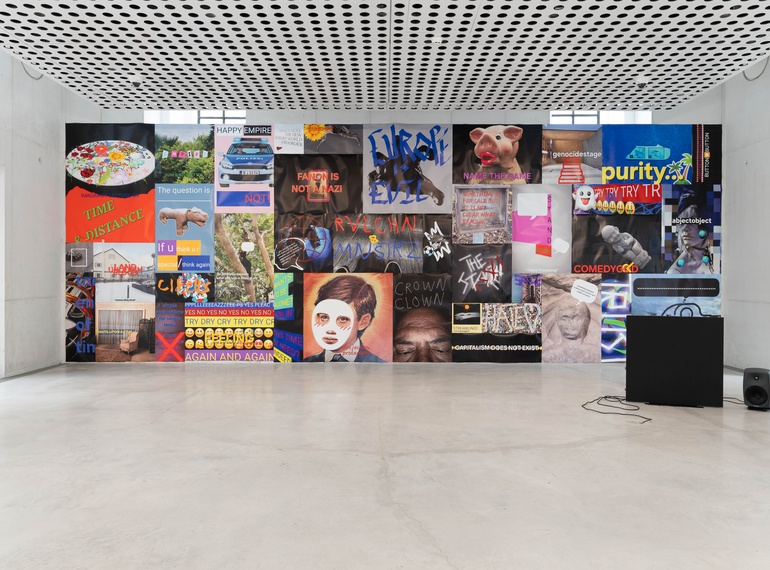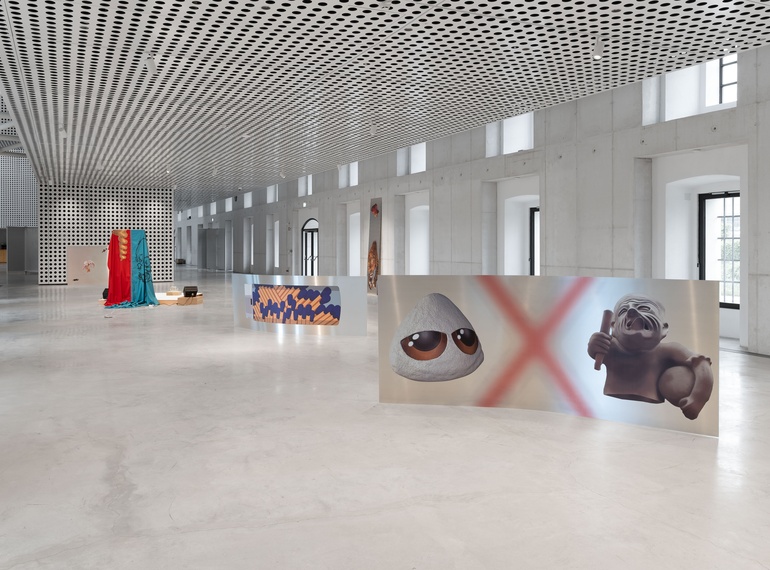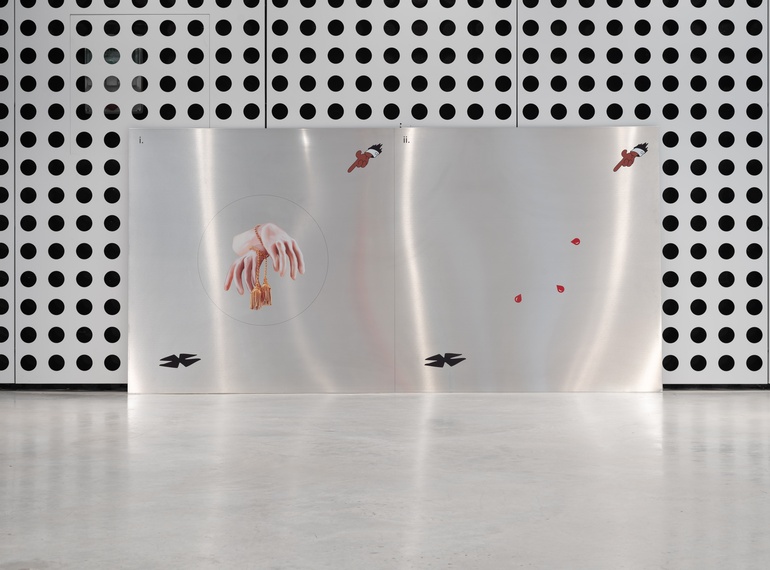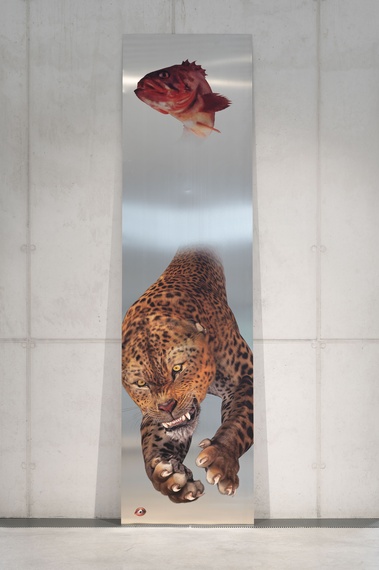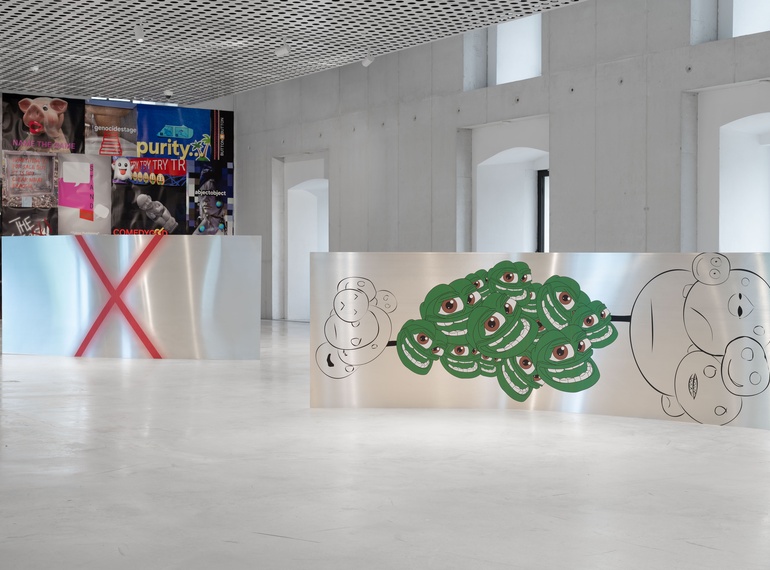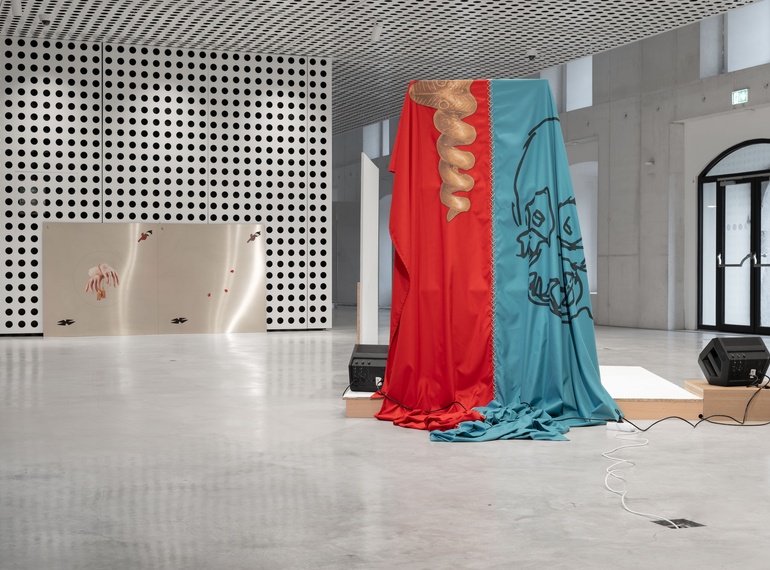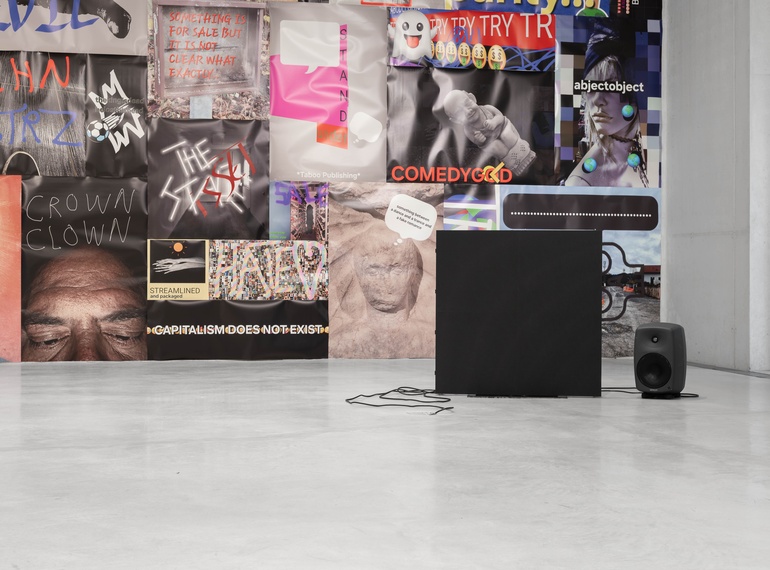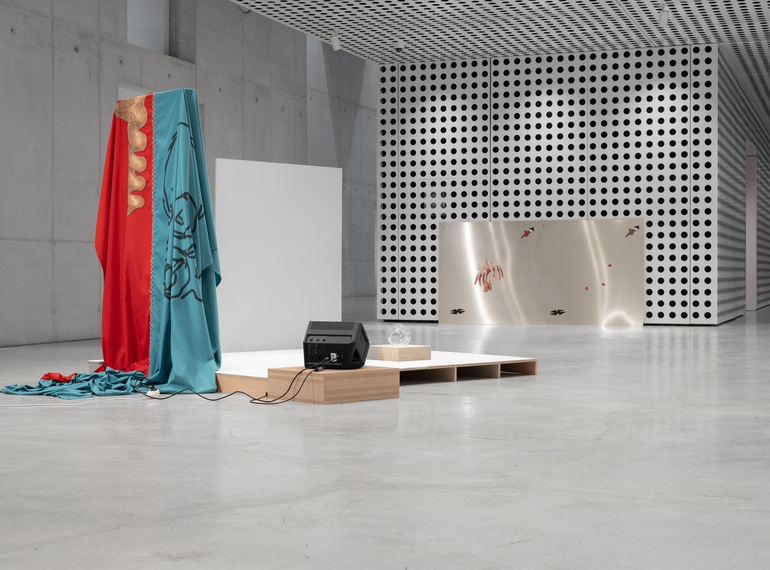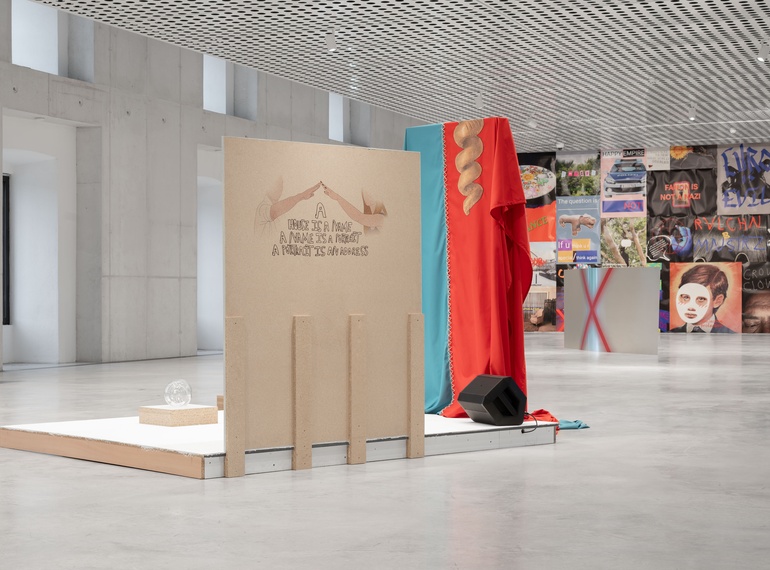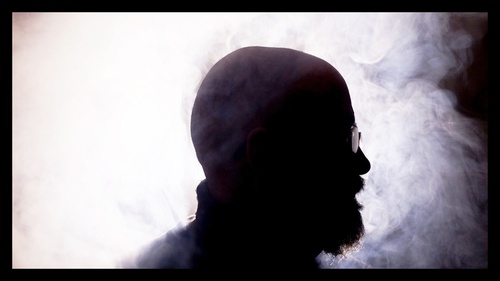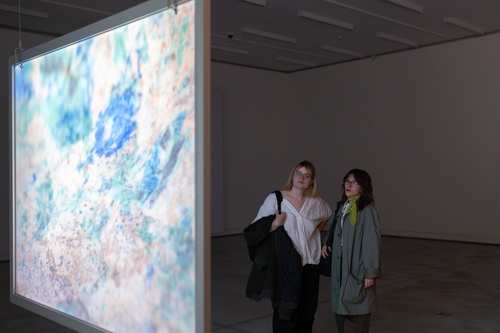Hassan Khan
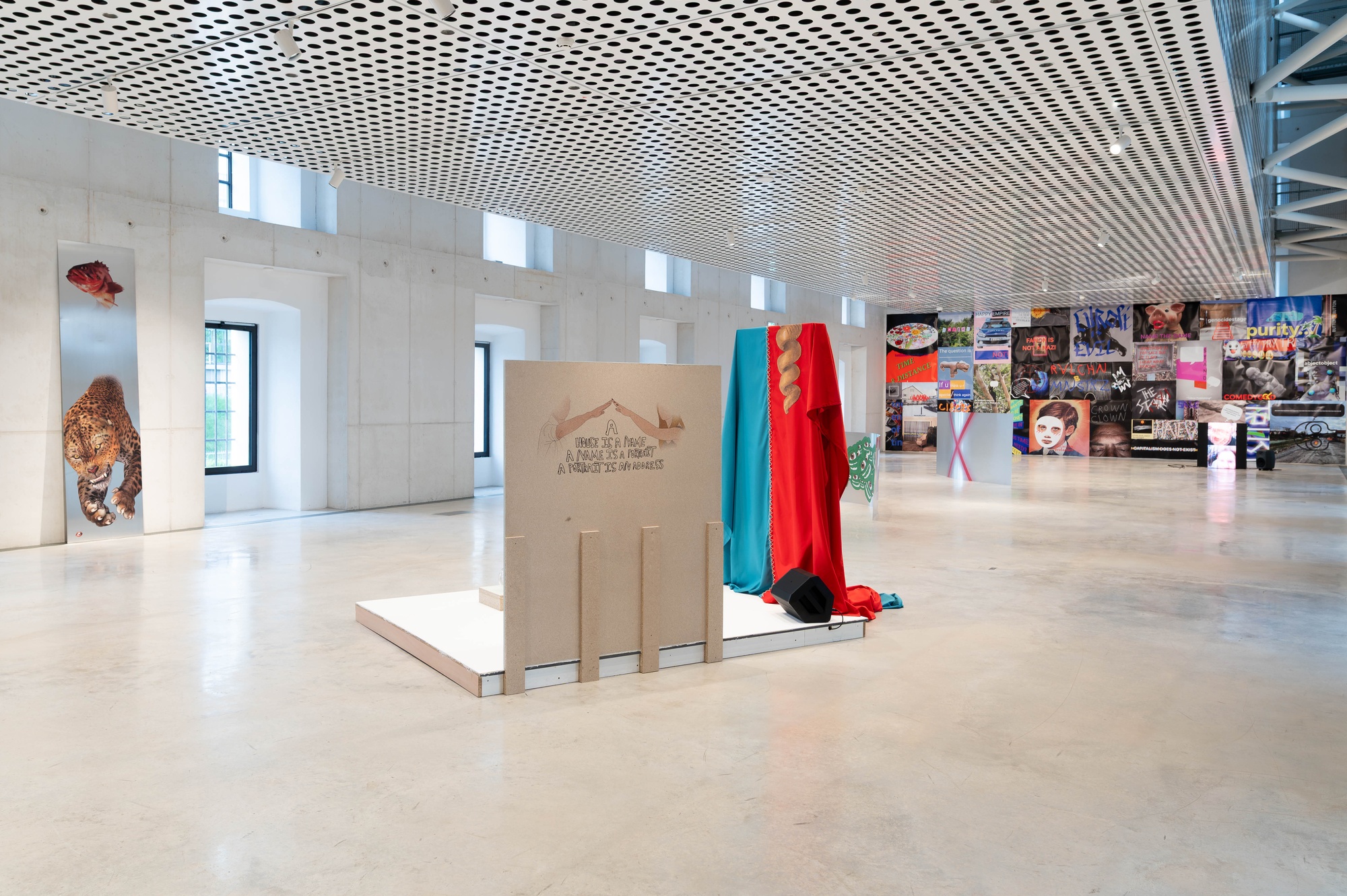
The exhibition GESTUS is structured as an assemblage, bringing together a wide range of artworks in different media and techniques. These include posters, glass objects, music, video, an assemblage constructed out of leftover material found in the storage spaces of Cukrarna Gallery, and digital illustrations printed on wood panels, fabric, and aluminium sheets. The exhibition is part of a one-month stay of the artist, musician, and writer Hassan Khan in Ljubljana and has been specially conceived for the Parter Gallery.
Its design is closely tied to the process and methodology of the work, which is based on collaboration with a diverse network of creatives such as actors, musicians, designers, printmakers, glass blowers, radio editors, and technicians. The chosen approach to the creative process and the title of the exhibition allude to Brecht’s theory of Gestus – a theoretical concept and methodological tool that he developed to achieve specific effects in theatrical practice. However, they are also distinct.
Brecht developed the theory of Gestus during the rise of fascism and the Second World War. He understood it as more than a theatrical device; it was a way of verifying reality, a demand for a relationship to truth, and a critical stance towards social conditions. It is for this reason that the consideration of the Gestus opens up space for a political stance. While Khan talks about this idea, especially in terms of the inevitability of the political character of today’s art his approach, tools, and goals are different, as he is primarily interested in the specific way the artworks functions in today’s context.
We are witnessing social and political disintegration, the growing influence of populism, racism, and nationalism, and the disintegration of the existing order. This leaves open the question of what will replace it. He therefore decided to undertake a bold experiment: to create an exhibition in a short and intense period of time, and to ask what kind of artwork can even operate under the given circumstances. The process was marked by a consistent responsiveness to conditions, where the artist consciously worked with the constraints, adapting to them and accepting the need for flexibility. The traces of this process are part of the artworks themselves, influencing their appearance and shaping their forms. Through the immediacy of the context of production Khan precisely links content technique and medium for each element of the exhibition. Thus, all 45 posters were solely designed on a smartphone, four of Khan’s songs were recorded with a fictional band, the glass objects were made under the influence of the peculiar exaggeration of populist comedies, a series of digital emblems, computer-generated images, and digital illustrations printed on wood panels and aluminium sheets were inspired by the iconography and virtuality of contemporary visual culture. The improvised video, featuring actors in the costume depot of a film studio, was shot and edited on the smartphone. By adopting this approach, the artist brings his tools to life and makes them relevant, aiming to explore situations that reveal paradoxes and specific relationships, to transcend the taken-for-granted of the everyday, and to hopefully discover the potential for transformation and alternative narratives. Speaking of his process, Hassan Khan says: “The word Gestus was used by Brecht to point towards the idea of the latent conditions of the world manifesting in the gestures and appearances of the actors the director works with – this exhibition has the ambition to try to work productively with this understanding and to touch this moment to produce and discover relevant forms, thoughts and emotions.”
Curated by: Mara Anjoli Vujić
The works in this exhibition were produced through varying degrees of involvement and collaboration with the following designers/digital illustrators, actors, musicians, glassmakers, print technicians, a radio editor and radio technicians: Nia Gombač, Jaka Berger, David Kocmur, Kaja Skrbinšek, Timi Vremec, Zvonko Drobnič, Dejan Porenta, Uroš Potočnik, Suzana Grau, Suzana Krevh, Vid Bešter, Jure Anžiček. Producer: Lenka Đorojević; Design of promotional materials: Ajdin Bašić; Public relations: Mojca Podlesek; Technical crew: Jože Kalan, Martin Lovšin. Production: Cukrarna Gallery / MGML. Partners: Filmski studio VIBA FILM Ljubljana, Radio Študent.
Sponsored by:
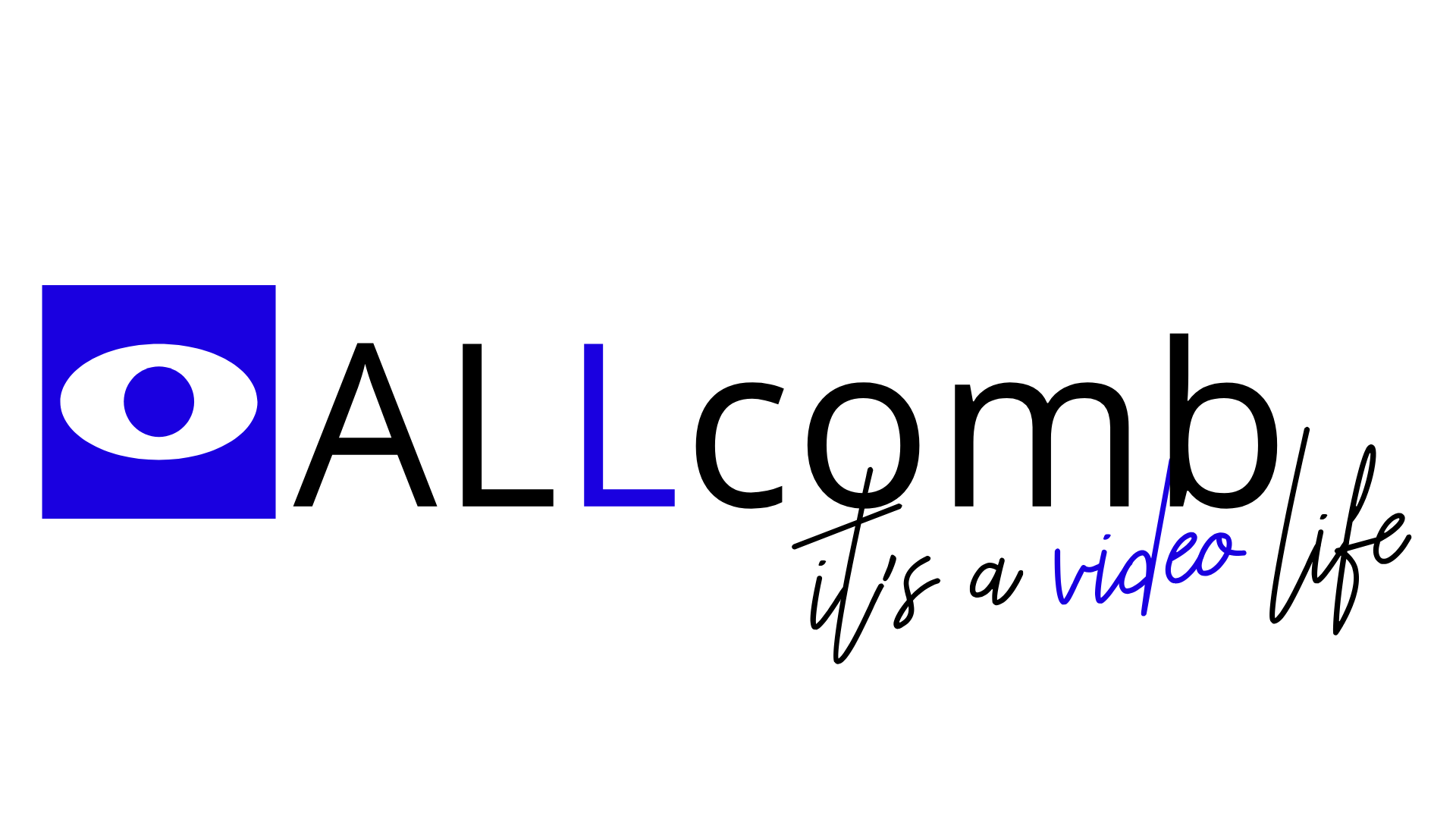
Partners:
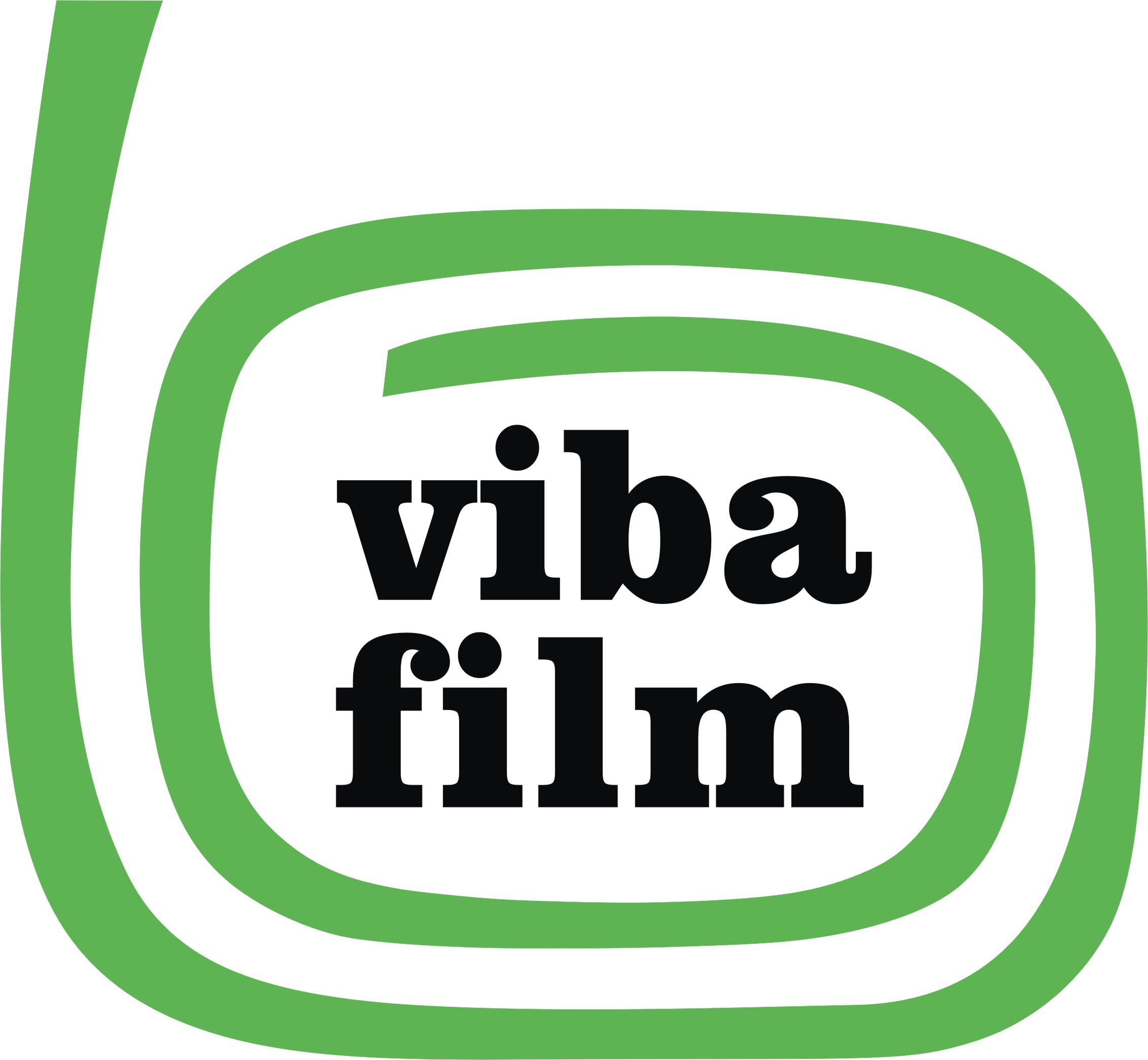
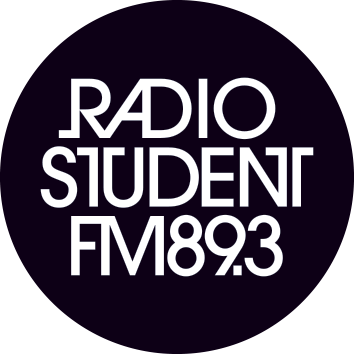
Opening hours
Tuesday to Sunday: 10.00–19.00
Tickets
Free entry.
